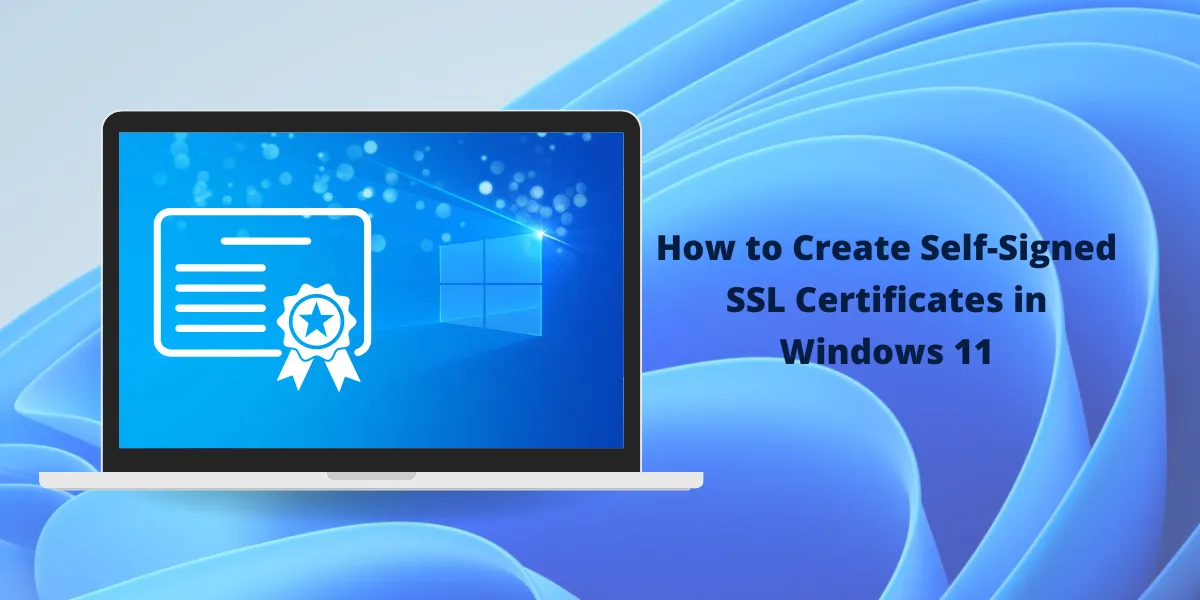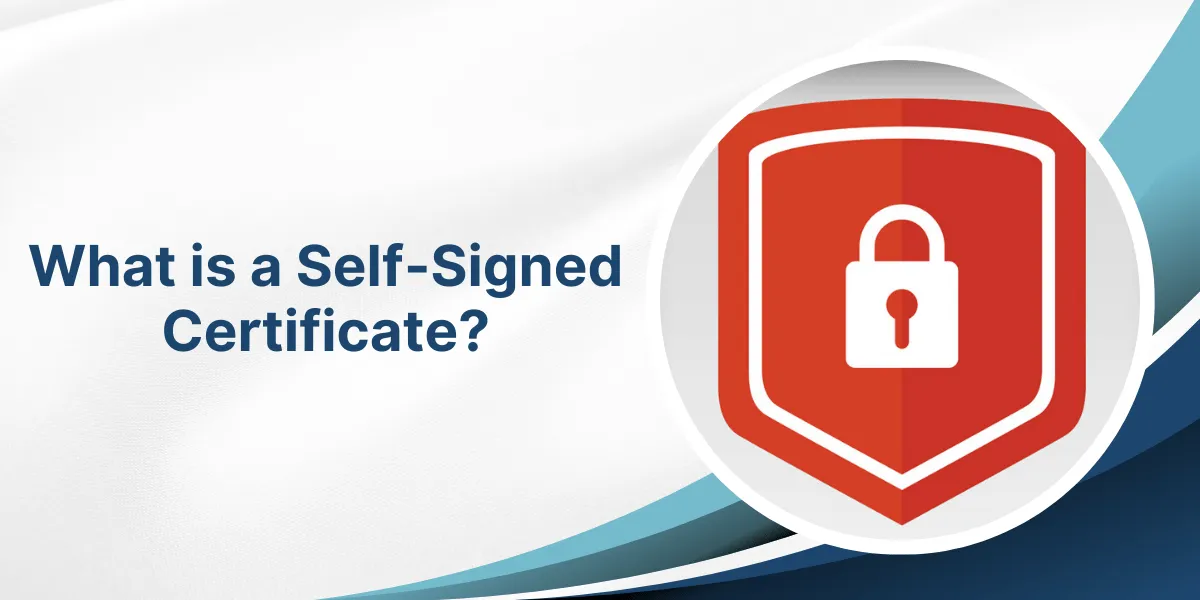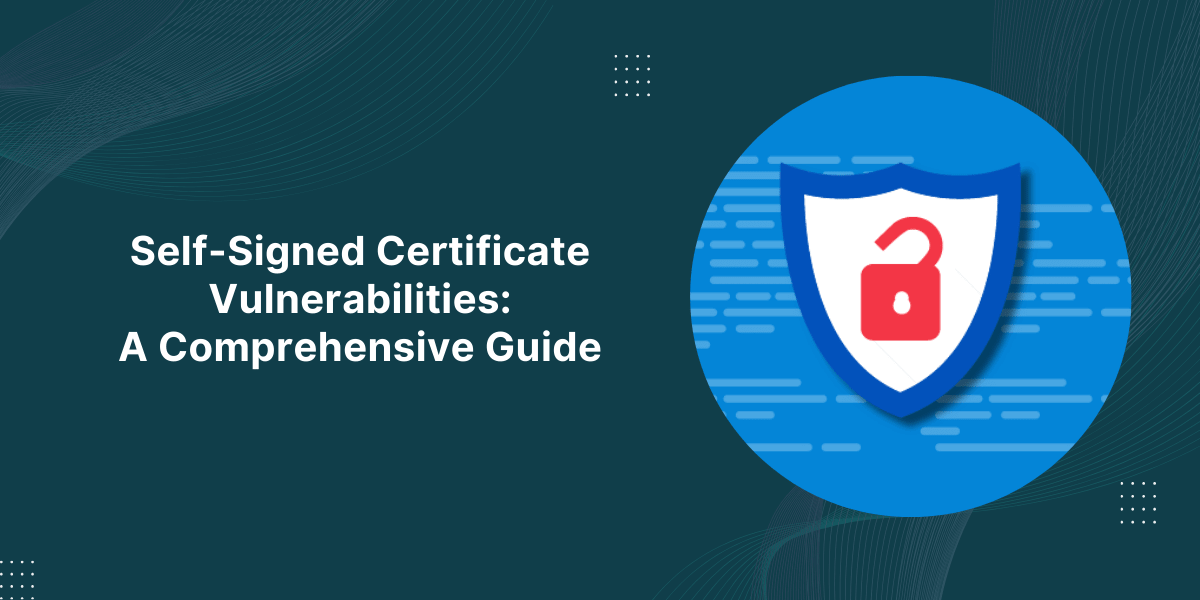A Step-by-Step Guide for Creating Self-Signed SSL Certificates in Windows 11
SSL certificates play a crucial role in securely encrypting and protecting data flow between websites and users’ browsers. While publicly trusted SSL certificates provide fully verified encryption, there are scenarios where using self-signed SSL certificates in Windows 11 can be handy for testing securely over HTTPS. These self-signed certificates are simply encryption certificates generated on your local Windows machine without formal validation from a certificate authority.
This guide will provide you with a comprehensive walkthrough on how to create self-signed SSL certificates in Windows 11 using the inbuilt Certificates Manager and expert PowerShell methods. We will cover how to properly generate, export, and install the self-signed certificates to enable HTTPS encryption on your internal websites using the capabilities within Windows 11 itself.
Key Takeaways
- Self-signed SSL certificates are Encryption Certificates generated locally without a Trusted CA.
- They allow enabling HTTPS on local/internal sites for testing before getting a Public Trusted SSL.
- On Windows 11, certificates can be created using the Certificates Manager or PowerShell.
- The process involves creating a Certificate Signing Request and then self-signing it as the CA.
- The PFX certificate file exported from the process needs to be installed on the web server.
- Browsers show security warnings for self-signed certificates since they are not publicly trusted.
- Self-signed certificates provide encryption but should only be used temporarily for local/internal sites.
How to Generate a Self-Signed Certificate in Certificates Manager
Windows includes the Certificates Manager, which provides a graphical interface for managing certificates.
Here are the steps to use it to generate a self-signed SSL certificate:
- Open Certificates Manager
- Create a Certificate Signing Request
- Enter Details for the CSR
- Submit an Issue the Certificate
- Export the Certificate and Private Key
Open Certificates Manager
- Go to Start, search for “Manage computer certificates,” and open the Certificates Manager app.
- This opens the Certificates manager window showing all existing certificates.
Create a Certificate Signing Request
- In the Certificates manager, go to the Personal folder in the left pane and click on Certificates.
- Click on Action > All Tasks > Advanced Operations > Create Custom Request.
- This will open the Certificate Signing Request wizard. Click Next.
Enter Details for the CSR
- Choose the Certificate Template as Web Server and click Next.
- Enter a descriptive Name for the certificate signing request.
- Set the Cryptographic Provider to ‘Microsoft RSA SChannel Cryptographic Provider.’
- For Type, choose ‘Create new key set‘ and select ‘2048‘ as the bit length.
- Check the ‘Use local machine store‘ checkbox.
- Enter valid details for your organization in the Organization and Organizational Unit fields.
- Enter the domain name in Common Name that the certificate will be used for.
- Fill in other fields like Country, State, and Locality as per your details.
- Click Next and check the summary before clicking Finish to create the CSR.
Submit an Issue the Certificate
- The CSR will now appear in the Personal Certificates folder. Right-click on it and select All Tasks > Submit a new request.
- On the next screen, select Submit to the CA below and choose the local Certificate Authority. Hit OK.
- The request will now be listed under Pending Requests. Right-click and select Issue.
- This will issue the CSR as a self-signed certificate under Personal > Certificates.
Export the Certificate and Private Key
- Expand the new certificate and right-click on the displayed certificate.
- Go to All Tasks > Export to launch the Certificate Export Wizard.
- Choose ‘Yes, export the private key‘ and hit Next.
- For Export File Format, select ‘Personal Information Exchange – PKCS #12 (.PFX)‘.
- Set a Password and confirm it. Specify a name for the export PFX file.
- Complete the wizard to export the PFX file containing the self-signed certificate and private key.
This PFX file can now be installed on the webserver to use the self-signed SSL certificate to encrypt connections.
Easy Steps for Creating a Self-signed Certificate using PowerShell
Windows 11 also allows the generation of self-signed certificates through PowerShell commands.
Here is the full process:
- Launch PowerShell as Administrator
- Generate the CSR
- Convert CSR to a Self-Signed Certificate
- Export the PFX File
Launch PowerShell as Administrator
- Open the Start menu, search for PowerShell, right-click on it, and select Run as Administrator.
Generate the CSR
- Run the following command to generate a CSR for a .com domain example.
New-SelfSignedCertificate -DnsName www.example.com -CertStoreLocation cert:\LocalMachine\My
- This will generate a CSR with the specified DNS name in the Local Machine Cert Store.
Convert CSR to a Self-Signed Certificate
- Next, convert the CSR into a self-signed certificate by running:
$cert=Get-ChildItem -Path cert:\LocalMachine\My\ | Where-Object {$_.Subject -match "www.example.com"}
Set-SelfSignedCertificate -Cert $cert -Subject www.example.com -EKU 'Server Authentication' -KeyUsage DigitalSignature, KeyEncipherment -Type Custom -KeyExportPolicy ExportableEncrypted- This self-signs the CSR as a valid SSL certificate for server authentication.
Export the PFX File
- Finally, export the new certificate and private key to a .PFX file:
Export-PfxCertificate -Cert "cert:\LocalMachine\My\$($cert.Thumbprint)" -FilePath C:\examplecert.pfx -Password (ConvertTo-SecureString -String "password" -Force -AsPlainText)
- The .PFX file will be saved to *C:* with the set password.
This .PFX can then be installed on the target web server like IIS to utilize the self-signed certificate for enabling HTTPS.
How to Enable HTTPS with a Self-signed Certificate
Once you have a self-signed certificate PFX file, follow these steps to configure an HTTPS website:
- IIS Manager
- Apache
- Nginx
IIS Manager
- Open IIS Manager, select website under Sites.
- Double-click on Bindings, click Add to add an HTTPS binding.
- In the Add Site Binding popup, set Type as https, specify TCP port.
- Set the SSL certificate to the imported self-signed certificate, click OK.
- Website accessible over HTTPS using the self-signed cert.
Apache
- Place the PFX file in the Apache config folder like /etc/ssl.
- Update ssl.conf to point to the PFX for the SSLCertificateFile directive.
- Enable the ssl site in Apache config files with a2ensite ssl.conf.
- Restart Apache to load the certificate and enable HTTPS.
Nginx
- Move the PFX to the Nginx config folder like /etc/nginx/ssl.
- Add directives in the Nginx server block to point to the PFX file and enable SSL.
- For example:
server {
listen 443 ssl;
ssl_certificate /etc/nginx/ssl/examplecert.pfx;
location / { }
}
- Reload Nginx to apply the new certificate and settings.
The website will now serve over HTTPS encrypted with the self-signed certificate when accessed over port 443.
Final Thoughts
Self-signed SSL certificates provide a simple way to enable HTTPS encryption on internal or development websites when an expensive public certificate is not required. While they do not offer full security due to the lack of browser trust, self-signed certs allow sites to be accessed over HTTPS for testing purposes before deploying with a trusted commercial certificate.
On Windows 11, creating self-signed certificates involves making a signing request and converting it into a certificate signed by your own CA. With the proper export and installation, these certificates can encrypt connections using HTTPS without the need for formal validation.
However, self-signed certificates should never be used on public production websites where valid trust is mandatory for true security.
FAQs about Self-Signed SSL Certificates in Windows 11
Why do browsers show security warnings for self-signed certificates?
Browsers show warnings for self-signed certificates because they are not issued and validated by any trusted Certificate Authority. So, the browser cannot verify their authenticity and knows they could be used in attacks.
Can self-signed certificates be used for public production websites?
Self-signed certificates should never be used on public production websites. They do not provide actual security because they are not trusted. For public sites, get an SSL certificate from a reputed CA like Comodo or DigiCert.
What are some valid use cases for self-signed certificates?
Self-signed certificates can be useful for testing locally, for intranets and development environments to enable HTTPS before getting a real certificate. They are meant for temporary use on internal servers.
How do I create a self-signed SSL certificate in Windows 11?
In Windows 11, you can use the built-in Certificate Manager tool to create a self-signed SSL certificate. This involves generating a new certificate, specifying the required details, and exporting the certificate and private key for use on your web server.
How do I remove the browser warnings for self-signed certificates?
The proper solution is not to use a self-signed certificate on public sites. For internal use, you can add a website as a trusted site in browser settings to ignore the warnings, but this will make your connection insecure.
Can I run HTTPS and HTTP together with a self-signed cert?
Yes, a self-signed certificate allows you to run both HTTPS and HTTP simultaneously. Users who access over HTTP will not face any certificate warnings.
Can I renew or extend the validity period of a self-signed certificate?
Self-signed certificates cannot be renewed like Paid SSL certificates. When a self-signed cert expires, you need to generate a new one to continue using it. Many servers are also configured to generate new self-signed certs when needed automatically.
Is there a size limit for common names in self-signed certificates?
The RFC standards recommend that the common name for server authentication certificates not exceed 64 characters. However, modern web servers and browsers generally support common names up to 64 characters.
Can I run multiple sites on the same IP with different self-signed certs?
Technically, you can generate different self-signed certificates for multiple websites on the same IP address using the Subject Alternative Name (SAN) extension. However, this is not commonly implemented with self-signed certs.
Can self-signed certificates be used for client authentication?
While self-signed certificates are primarily meant for HTTPS server authentication, they can also technically be utilized for client authentication if explicitly configured at both client and server ends. However, public CA certificates are more common and trusted for client auth use cases.

Priya Mervana
 Verified Web Security Experts
Verified Web Security Experts
Priya Mervana is working at SSLInsights.com as a web security expert with over 10 years of experience writing about encryption, SSL certificates, and online privacy. She aims to make complex security topics easily understandable for everyday internet users.



